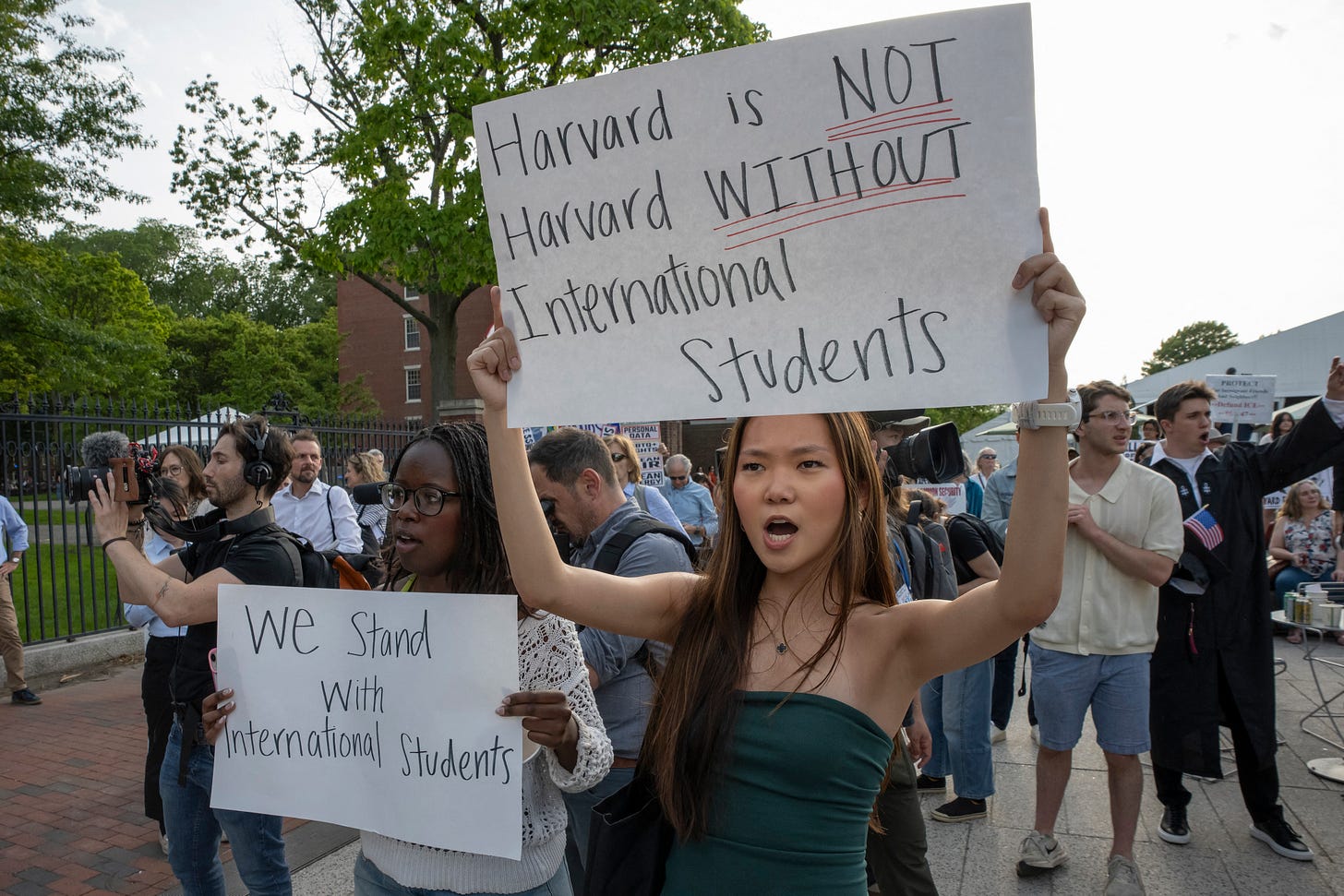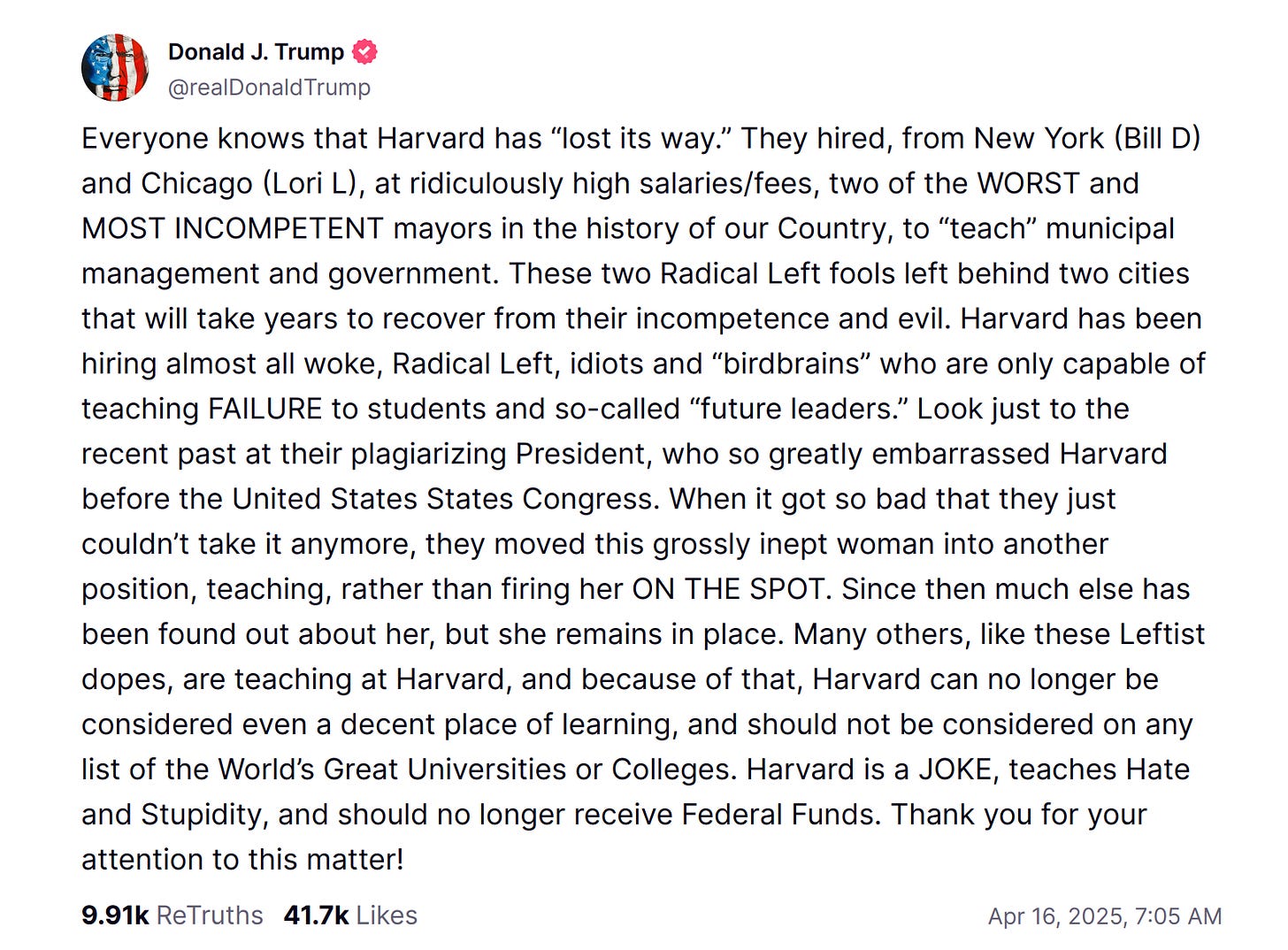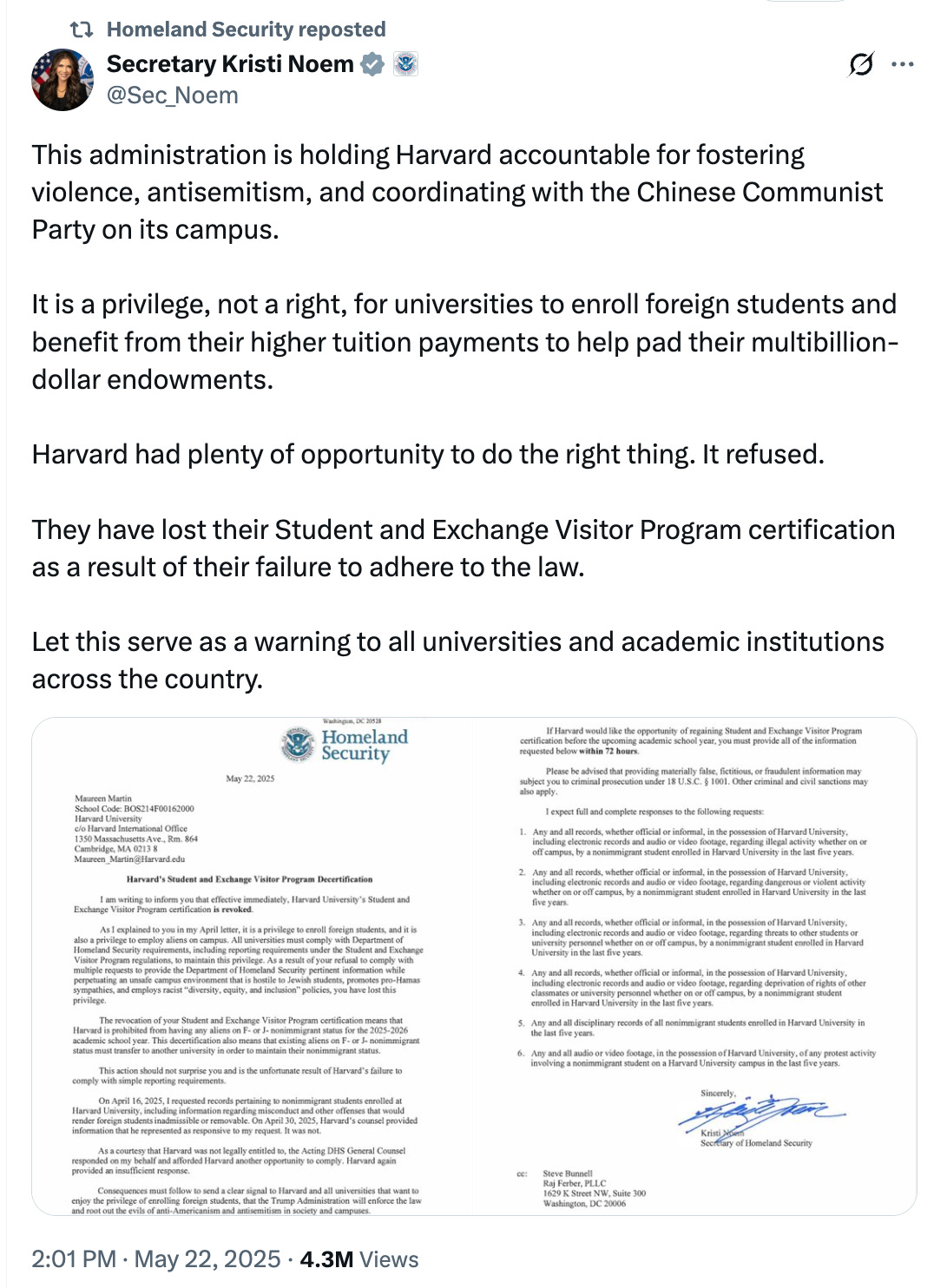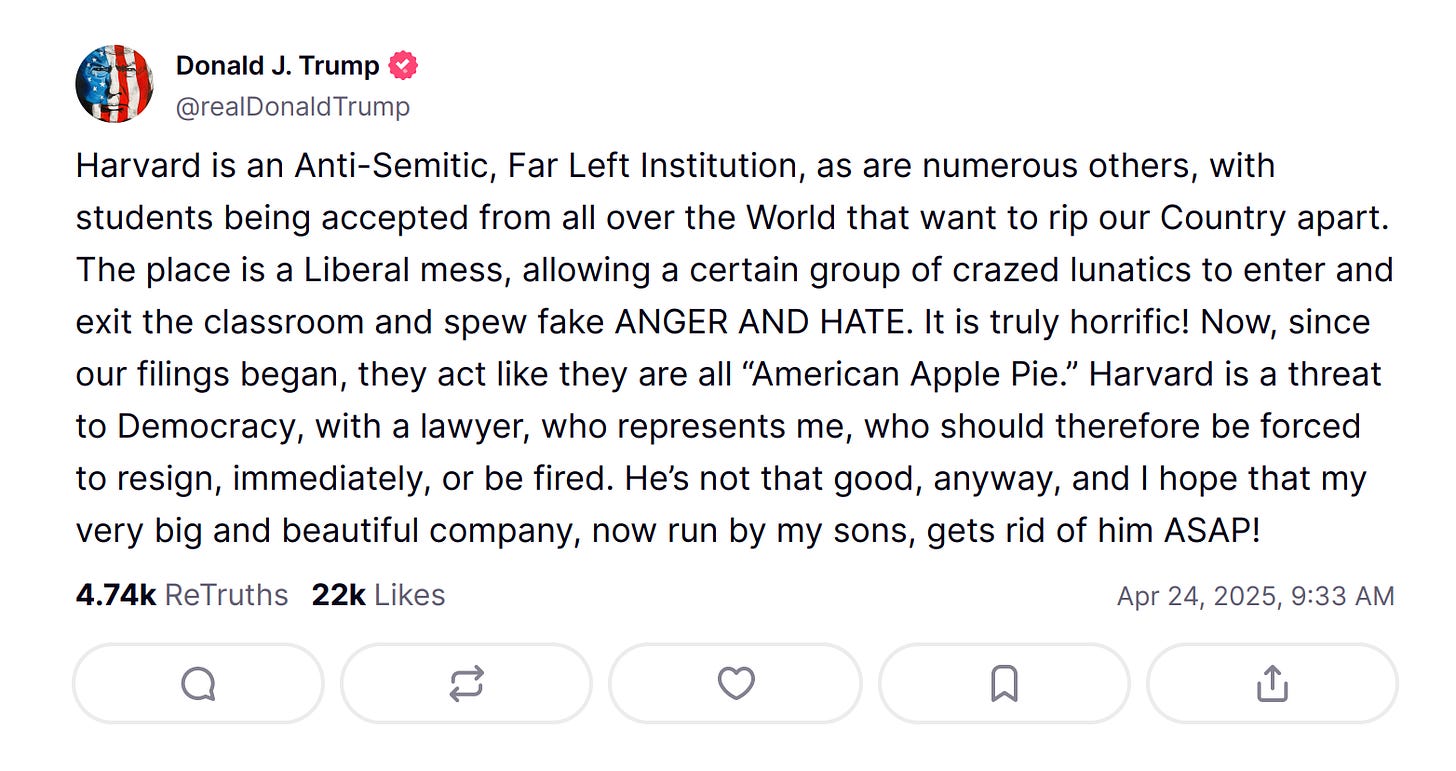https://images2.memedroid.com/images/UPLOADED58/52d40a7d2df73.jpeg
Once hailed as a triumph of public health, water fluoridation is now under intense attack in the US.
Despite decades of data proving its efficacy at protecting teeth from decay—particularly children's teeth—two states have now banned the use of fluoride in public water, and communities around the country have followed suit or are considering doing the same. The current US health secretary, Robert F. Kennedy Jr., who is known for his anti-vaccine advocacy and for peddling conspiracy theories, has pledged to remove fluoride from US water.
Now, a pair of researchers at Harvard—Sung Eun Choi and Lisa Simon—have modeled exactly what will happen in the US if Kennedy follows through on his pledge: The number of cavities and decayed teeth in American children and teens (ages 0–19) will increase by an estimated 7.5 percentage points over the first five years. That means there will be 25.4 million more rotten teeth in the mouths of children and teenagers. The dental bills for the added decay will total at least $9.8 billion in that time. Other costs, such as loss of work among parents, were not included, making the financial estimate conservative. But children will also be more miserable, with an estimated loss of 2.9 million quality-adjusted life years.

Late on Friday, Amazon announced that it was canceling its TV adaptation of Robert Jordan’s Wheel of Time series, after several uncomfortable weeks of silence that followed the show’s third season finale.
Fans of the series can take some cold comfort in the fact that it apparently wasn’t an easy decision to make. But as we speculated in our write-up of what ended up being the show’s series finale, an expensive show with a huge cast, tons of complicated costuming and effects, and extensive location shooting only makes mathematical sense if it’s a megahit, and The Wheel of Time was never a megahit.
Adapting the unadaptable
I was sad about the cancellation announcement because I believe this season was the one where the show found its footing, both as an adaptation of a complex book series and as a fun TV show in its own right. But I wasn't surprised by it. The only thing I found surprising was that it took this long to happen.
Two things conspired to make it impossible for this Wheel of Time show to ever reach the Last Battle. One has to do with the source material itself; the other has to do with the way the TV business has changed since Game of Thrones premiered in 2011.
The Wheel of Time actively resists adaptation. It's a sprawling 14-book series spanning dozens of named point-of-view characters and impossibly dense politics. And it even spans multiple eras stylistically—the early books were more Tolkien-esque in their focus on small bands of adventurers and a limited number of perspectives, where later books could go for multiple chapters without putting you in the head of one of the series' half-dozen-ish main protagonists. And even among the series' die-hard fans, most will admit that there are storylines, characters, or entire books that feel inessential or annoying or repetitive or sloggy or wheel-spinning.
Any adaptation would need to find a way to stay true to the story that the books were telling and to marry the tone and pacing of the early, middle, and late-series books while wrestling with the realities of a different medium (in particular, you cannot realistically pay for infinite episodes or pay infinite cast members, especially for a live-action show).
 By season 3, the show had become adept at translating big book moments for the screen.
By season 3, the show had become adept at translating big book moments for the screen.
That high degree of difficulty was surely one reason why it took someone so long to decide to tackle The Wheel of Time, even in the post-Peter Jackson, post-Harry Potter, post-Marvel Cinematic Universe, post-Game of Thrones creative landscape where nerd-coded sci-fi and fantasy were suddenly cool, where multi-part book adaptations were drawing dollars and eyeballs, and where convoluted interconnected stories could be billion-dollar businesses. The only stab anyone took at an adaptation before Amazon happened a full decade ago, when a fly-by-night production company aired a hastily shot adaptation of the first book's prologue in an apparent attempt to keep the TV rights from expiring.
It's also what makes the cancellation news so much more frustrating—over three seasons, showrunner Rafe Judkins and the cast and crew of the show became adept at adapting the unadaptable. Yes, the story and the characters had changed in a lot of major ways. Yes, the short eight-episode seasons made for frenetic pacing and overstuffed episodes. But if you grit your teeth a bit and push through the show's mess of a first season, you hit a series that seemed to know what must-hit scenes needed to be shown; which parts of the books were skippable or could be combined with other moments; which parts of later books to pull forward to streamline the story without making those moments feel rushed or unearned. It was imperfect, but it was a true adaptation—a reworking of a story for a much different medium that seemed to know how to keep the essence of the story intact.
Ambition meets reality
 Like Rand al'Thor struggling with the One Power, <em>The Wheel of Time</em> struggled against the realities of the current TV landscape.
Credit:
Prime/Amazon MGM Studios
Like Rand al'Thor struggling with the One Power, <em>The Wheel of Time</em> struggled against the realities of the current TV landscape.
Credit:
Prime/Amazon MGM Studios
The thing that doomed this particular Wheel of Time production from the start was the sky-high expectations that Amazon had for it. Both Wheel of Time and the heartbreakingly bland Rings of Power were born of Jeff Bezos' desire to find his own Game of Thrones, which became an unexpected smash-hit success that dominated the cultural conversation through the 2010s. Most TV shows either launch strongly before slowly fading, or they build an audience over a few seasons and then fade after reaching their peak. Game of Thrones defied these trends, and each new season drew a larger and larger viewership even as the show's quality (arguably) dipped over time.
Asking Wheel of Time to replicate that success would be a tall order for any television show in any era—pop culture is littered with shows that have tried and failed to clone another network's successful formula. But it's an especially difficult hurdle to clear in the fractured 2020s TV landscape.
Streaming TV's blank-check era—which ran roughly from Netflix's introduction of its first original shows in 2013 to 2022, when Netflix reported its first big dip in subscribers just as a long era of low-interest lending was coming to an end—used to give shows a ton of runway and plenty of seasons to tell their stories. Shows like Orange Is the New Black or BoJack Horseman that found some modicum of critical acclaim and ratings success tended to get renewed multiple times, and six or seven-season runs were common.
A commitment to reviving old, critically beloved bubble shows like Arrested Development, Community, Futurama, and Gilmore Girls also sent a message: Freed from the restrictive economics of the Old TV Model and fueled by the promise of infinite growth, we can make whatever TV we want!
Those days are mostly gone now (except perhaps at Apple TV+, which continues to leverage its parent company's deep pockets to throw gobs of money at any actor or IP with a moderately recognizable name). In the two years since TV streamers began cutting back in earnest, industry analysts have observed a consistent trend toward shorter seasons of fewer episodes and fewer renewals for existing shows.
Those trends hit at the exact wrong moment for The Wheel of Time, which was constantly straining against the bonds of its eight-episode seasons. It's impossible to say empirically whether longer seasons would have made for a better show, and whether that "better show" could have achieved the kind of word-of-mouth success it would have needed to meet Amazon's expectations. But speaking anecdotally as someone who was just beginning to recommend the show to people who weren't hardcore book readers, the density and pacing were two major barriers to entry. And even the most truncated possible version of the story would have needed at least six or seven seasons to wrap up in anything resembling a satisfactory way, based on the pace that was set in the first three seasons.
The end of Time
 <em>Wheel of Time</em> fans didn't get to see everything translated from book to screen. But we did get to see a lot of things.
Credit:
Prime/Amazon MGM Studios
<em>Wheel of Time</em> fans didn't get to see everything translated from book to screen. But we did get to see a lot of things.
Credit:
Prime/Amazon MGM Studios
Tellingly, the Wheel of Time's creative team hasn't released faux-optimistic boilerplate statements about trying to shop the show to other networks, the kind of statements you sometimes see after a show is canceled before its creators are done with it. The same economics that made Amazon drop the show also make it nearly impossible to sell to anyone else.
And so The Wheel of Time joins TV's long list of unfinished stories. There are neither beginnings nor endings to the turning of the Wheel of Time. But this is an ending.

An otherwise-healthy 52-year-old office worker showed up to a hospital emergency department in Buenos Aires with an unshakable fever he developed the week before. Besides the high temperature, he seemed fine. So, after testing negative for COVID-19, doctors sent him home with supportive care. But the fever didn't go away.
In the week that followed, things got worse. He developed nausea, stomach pain, and diarrhea. He also started having trouble breathing. He then went back to the hospital.
This time, doctors found he needed supplemental oxygen. And an X-ray of his chest was worrisome—there were diffuse ground-glass opacities in his lungs. Doctors wondered if he had an unusual case of pneumonia. The man kept getting worse; in fact, he seemed to deteriorate before their eyes. Initially, he received supplemental oxygen through a simple face mask; subsequently, doctors switched to a mask that delivers continuous oxygen. However, his blood oxygen saturation continued to fall.
He was admitted to the intensive care unit. There, he was quickly intubated and put on mechanical ventilation. Then, his cardiovascular system started to fail. He went into severe shock. His kidneys shut down, and doctors started dialysis. He was soon heavily sedated on fentanyl and other drugs while machines kept him alive. The case and the path to his diagnosis was published Wednesday in the New England Journal of Medicine.
Diagnostic challenge
The man's medical history offered few clues as to what could be going on. He was generally healthy and worked in an office without any risky occupational exposures. He had a history of gallstones and a recent root canal—nothing obviously concerning. He had been camping recently in a rural area of Chascomús, south of Buenos Aires. But he reported no insect bites, contact with rodents, or other exposures.
Lab results showed that his blood had abnormally high concentrations of red and white blood cells, and low levels of platelets. He tested negative for a slew of infections, including COVID-19 (again), influenza, HIV, dengue, and the bacterial blood infection leptospirosis. Computed tomography (CT) scans of his lungs showed more ground-glass opacities as well as a "halo sign," a blotch on scans that sometimes signals invasive fungal infections. There were also signs of lung collapse and fluid buildup (edema).
It was a diagnostic challenge, and doctors began reviewing the list of possibilities that could match his condition. The first guess of pneumonia could explain some of his respiratory findings, but he didn't have a cough, had tested negative for common respiratory pathogens, and the lung imaging didn't quite fit, making it seem unlikely. Blood cancers, such as polycythemia vera, might be able to explain the high concentrations of blood cells. And it might also make him more vulnerable to opportunistic lung infections, like a fungal infection that could explain the halo sign. But blood cancers were also deemed unlikely given that he didn't have enlarged organs, which is often seen with such conditions. Another possibility of pulmonary–renal syndrome, but that also didn't line up with the man's case.
Diagnosis
There was one other possibility that seemed to tick all the boxes: fever, gastrointestinal symptoms, low oxygen saturation, pulmonary edema, and shock—a hantavirus infection.
Hantaviruses are RNA viruses that infect rodents worldwide. They typically cause asymptomatic, chronic infections in the animals, which spread the virus widely into their environments through their urine, feces, and saliva. Humans get infected when virus particles from rodent-contaminated areas are stirred up into the air and inhaled, or through direct contact with the virus via the eyes, nose, mouth, or cuts.
In humans, the viral infection is anything but asymptomatic. While the disease mechanism isn't entirely understood, the virus appears to be able to modulate immune responses in humans, causing blood vessels and capillaries in various places in the body to start leaking plasma. This leads to fluid building up in the lungs (the pulmonary edema) and systemic circulatory collapse.
A cardiopulmonary hantavirus infection typically has four stages: the incubation period, which can last up to 45 days after virus exposure; a prodromal phase up to 12 days that are marked by fever, fatigue, and pains; the cardiopulmonary phase, where breathing trouble, low oxygen saturation, and shock can develop; then, if you make it, the fourth stage, in which respiratory symptoms improve, but there's lingering fatigue and the kidneys make abnormally large amounts of urine.
Haunting risks
There is no specific treatment for hantavirus; medical care is mostly supportive. The man ended up staying in the ICU for 40 days, gradually improving with all of the interventions. When his condition stabilized, he was moved to a specialized rehabilitation center for respiratory and neuromuscular recovery. He went on to make a full recovery and visited the ICU where he had been treated.
Doctors suspect that he was infected with hantavirus on his camping trip Chascomús, where the virus is endemic, despite not recalling any rodent exposure. His medical follow-up included discussions of infection-control measures at the rural property, in case he ever decides to go camping there again.
Hantaviruses are found throughout the world, including in the US. North and South America are home to "New World Hantaviruses," which cause cardiopulmonary syndrome, while countries in Europe and Asia have "Old World Hantaviruses," which cause hemorrhagic fever and renal syndrome.
In the US, between 20 and 40 cases are logged annually, with most cases identified west of the Mississippi River. Since federal surveillance began in 1993, the Centers for Disease Control and Prevention has documented over 800 cases. About 35 percent of US cases have been fatal.
The infection has been in the US news recently with the deaths of pianist Betsy Arakawa and actor Gene Hackman. The married couple was found dead in their home in New Mexico, a state with one of the highest national tallies of hantavirus infections. After an investigation, Arakawa's cause of death was identified a pulmonary hantavirus and a rodent infestation was found on the property. Hackman's cause of death was heart disease, with advanced Alzheimer's as a contributing factor.

🧑🎓 📖 👩🏫 With corporate outlets obeying in advance, supporting independent political media is more important right now than ever. PN is possible thanks to paid subscribers. If you aren’t one already, please click the button below to sign up and support our work. 👩🏫 📖 🧑🎓
The Trump administration would be getting slapped down in court even if the president and his minions didn’t constantly announce their intent to violate the law. But their incessant chest thumping does make things go a lot faster.
Case in point: the temporary restraining order barring the government from canceling student visas at Harvard University. The order was issued just hours after Homeland Security Secretary Kristi Noem revoked Harvard’s visa “privilege” for foreign students. The administration teed up the ruling by declaring that it intended to flagrantly violate the First Amendment. But they telegraphed their punch so thoroughly that Harvard’s lawyers had a 72-page complaint with 28 exhibits ready to be filed the second Noem announced the plan.
Trump hates Harvard
Just hours after being sworn in, Trump signed an executive order instructing federal agencies to “identify up to nine potential civil compliance investigations” of civic, corporate, and academic institutions, including “institutions of higher education with endowments over 1 billion dollars” for their supposed “illegal discrimination.”
The EO was clearly an attack on the Ivy League, long targeted by conservatives as a bastion of “wokeness” that should be brought to heel. And Project 2025, with its “big idea” to seize control of the budget from Congress, provided Trump with a blueprint to wield federal tax dollars as a weapon against state governments and institutions.
Part of the plan was for Trump to unilaterally announce new “laws” via executive order, and, instead of asking courts to enforce them, leverage federal funds to punish anyone who resists.
And so the president simply declared DEI “illegal,” and used the widespread adoption of anti-discrimination policies by corporations and academia as a pretext to go after anyone he doesn’t like. But, as a federal judge noted last week when he blocked an attack on the law firm Jenner & Block, “the defendants point to no case holding such diversity initiatives illegal.” This is simply the executive branch inventing a new legal theory and demanding that everyone treat it as settled law.
Harvard, the nation’s oldest university, is also the richest, with a whopping $52 billion endowment. And while it did scale back DEI programs and censor some anti-Israel speech on campus, the university was wholly unwilling to surrender its academic freedom to the administration’s whims — particularly after it saw the “vig” Trump demanded from Columbia University as the price of peace.
In March, the Trump administration announced that it was “reviewing” $8.7 billion in government grants to Harvard, much of it for scientific research.
“Harvard’s failure to protect students on campus from antisemitic discrimination — all while promoting divisive ideologies over free inquiry — has put its reputation in serious jeopardy,” Education Secretary Linda McMahon raged. “Harvard can right these wrongs and restore itself to a campus dedicated to academic excellence and truth-seeking, where all students feel safe on its campus.”
On April 11, Harvard sued in federal court in Massachusetts, alleging that the funding cuts were an arbitrary and capricious agency action in violation the First Amendment, the Fifth Amendment’s due process clause, and the Constitution’s separation of powers. That case landed on Judge Allison Burroughs’s docket, and when the school sued again 10 days later over a further round of funding cuts, it designated the cases as “related,” ensuring that it, too, would be assigned to the Obama appointee.
A note from Aaron: Working with brilliant contributors like Liz takes resources. If you aren’t already a paid subscriber, please sign up to support our work.
Harvard docketed voluminous correspondence demonstrating that the Trump administration is using federal funds to both coerce the school into changing its speech, and retaliating against it for speech conservatives don’t like. For instance, a letter signed by representatives of the General Services Administration and the Departments of Education and Health and Human Services presented an “agreement in principle” demanding sweeping changes to all aspects of the university’s hiring, admissions, disciplinary, and curricular programs as a precondition of preserving the school’s federal funds.
“The university will not surrender its independence or relinquish its constitutional rights,” the university wrote in response. “Neither Harvard nor any other private university can allow itself to be taken over by the federal government.”
That response was signed by longtime Republican lawyer Bill Burck, of the law firm Quinn Emanuel, and Robert Hur, the former special counsel tapped by Attorney General Bill Barr to investigate Joe Biden. (Burck was immediately fired by the Trump Organization as an ethics advisor.)
Loose lips sink lawsuits
Trump’s constant public screeds serve as potent evidence that the funding cuts are retaliatory, and any supposed DEI “crimes” are mere pretext.
On April 15, he suggested that Harvard “should lose its Tax Exempt Status and be Taxed as a Political Entity if it keeps pushing political, ideological, and terrorist inspired/supporting ‘Sickness?’”
That’s an explicit attack on Harvard’s academic freedom, which is protected by the First Amendment. And he followed it up the next day by screeching that “Harvard is a JOKE, teaches Hate and Stupidity, and should no longer receive Federal Funds.”
In case that was too subtle, Secretary of Education Linda McMahon admitted in an interview with CNBC on May 7 that the administration is 100 percent targeting Harvard for disfavored speech.
“Are they vetting students who are coming in from outside of the country to make sure they’re not activists? Are they vetting professors that they’re hiring to make sure that they’re not teaching ideologies?” she said. “They’ve taken a very hard line, so we took a hard line back.”
All these comments — and so many more! — featured in Harvard’s lawsuits.
Put it in writing
Throughout the spring, Trump administration officials continued to send menacing letters to the university.
“Harvard University has made a mockery of this country's higher education system,” McMahon wrote in a particularly unhinged missive on May 5.
“Our universities should be bastions of merit that reward and celebrate excellence and achievement. They should not be incubators of discrimination that encourage resentment and instill grievance and racism into our wonderful young Americans,” she ranted, making it entirely clear that the administration was retaliating against the school for academic choices — which are very clearly protected by the First Amendment. Accusing the university of engaging in affirmative action after the Supreme Court outlawed it in 2023, McMahon vowed that “Harvard should no longer seek GRANTS from the federal government, since none will be provided.”
Not to be outdone, DHS Secretary Kristi Noem went on the hunt for other ways to kneecap the school. In April, her agency began demanding extensive records on foreign students and faculty under the Student and Exchange Visitor Program (SEVP). The program is a crucial pillar of US soft power, exposing millions of foreign students to American culture and ensuring US access to the best and brightest pupils, faculty, and researchers. It was never intended to be a pressure point for the executive branch to exert control over academic institutions.
And yet Noem has done just that, sending a series of intrusive demands to Harvard for records on its foreign students and faculty — far beyond what is required by statute or regulation — and warning that failure to comply “will be treated as a voluntary withdrawal” from the program.
Harvard maintains that it did comply, despite DHS’s vague commands to hand over lists of visa holders engaged in “deprivation of rights” or “obstruction of the school’s learning environment.”
Nonetheless, on May 22, Noem purported to cancel all student visas for Harvard students.
“As I explained to you in my April letter, it is a privilege to enroll foreign students, and it is also a privilege to employ aliens on campus,” she huffed. “As a result of your refusal to comply with multiple requests to provide the Department of Homeland Security pertinent information while perpetuating an unsafe campus environment that is hostile to Jewish students, promotes pro-Hamas sympathies, and employs racist ‘diversity, equity, and inclusion’ policies, you have lost this privilege.”
Noem announced the revocation on Twitter, accusing the school of “fostering violence, antisemitism, and coordinating with the Chinese Communist Party on its campus.”
Note that none of these is “failing to comply with the mandates of the SEVP.” And access to government programs is not a “privilege” flowing from the generosity of the Dear Leader, but a right to which all Americans are entitled equal access.
As Harvard argued in its complaint, “the government’s effort to punish the University for its refusal to surrender its academic independence and for its perceived viewpoint is a patent violation of the First Amendment,” adding that the order would immediately revoke the residency status of more than 7,000 students, instructors, and graduates, throwing the entire academic year into chaos.
Here again, Trump’s deranged attacks on Harvard, as well as sycophantic echoes by his minions, are offered as evidence that the revocation had nothing to do with the school’s supposed failure to adhere to the requirements of SEVP.
So far Judge Burroughs has not reached the merits of Harvard’s complaint. But within minutes she granted a temporary restraining order barring the government from kicking Harvard out of SEVP to prevent “immediate and irreparable injury before there is an opportunity to hear from all parties.” She scheduled a hearing for tomorrow on the school’s request for longer term relief.
And still the president is supplying more evidence that this decision was based on Harvard’s speech, not its failure to comply with the terms of the SEVP.
First, Trump complains that the percentage of foreign nationals matriculating at Harvard is too high, something which has nothing to do with eligibility under SEVP. Then he makes the bizarre claim that Harvard refuses to give the government a list of the foreign students enrolled.
That’s nuts. Accepted students must apply for a visa and be approved by the secretary of state. The government doesn’t need a “list” of foreign students at Harvard or anywhere else.
And the president is still going! Yesterday he threatened to “take” money from Harvard and give it to trade schools — unilaterally expropriating congressionally allocated funds for medical and scientific research and doling it out as bribes to favored constituencies.
Then the GSA put out a letter, first published by the New York Times, instructing federal agencies to terminate all remaining grants with Harvard based on inchoate allegations of antisemitism and “illegal” DEI.
Those TRO motions write themselves!
That’s it for today
We’ll be back more tomorrow. If you appreciate today’s newsletter, please support our work by signing up. Paid subscribers make Public Notice possible.
Thanks for reading, and for your support.





